Rain Watch for July 25-31: Monsoon progresses, reservoir storage levels are up
Sowing of rice is lagging slightly due to low rainfall in West Bengal. Coarse cereals, pulses and oilseeds sowing is still 3-14 percent higher year-on-year.
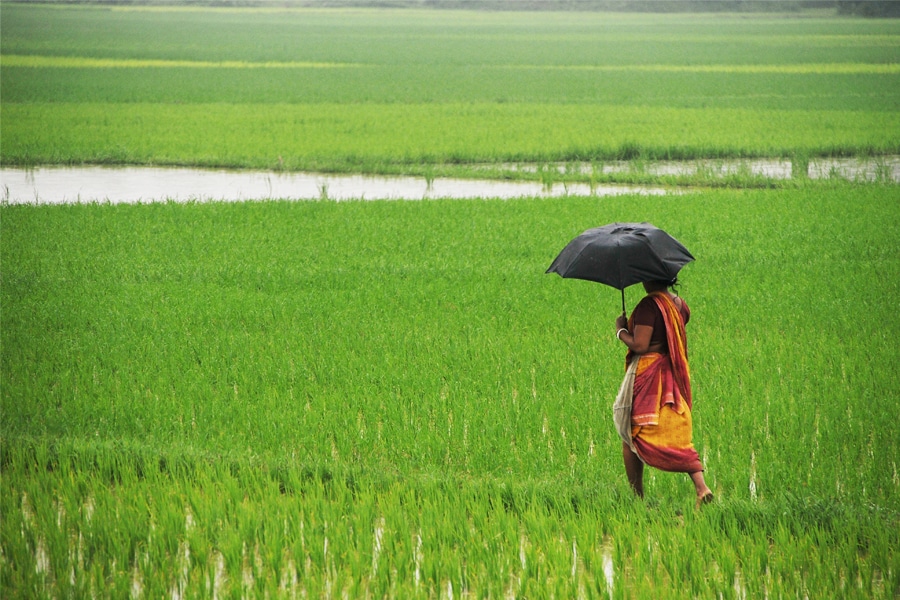 As uneven distribution of rains continues, the southern and central regions have cumulatively seen excess rainfall, while rains in the northwest and eastern states are deficient
Image: Getty Images
As uneven distribution of rains continues, the southern and central regions have cumulatively seen excess rainfall, while rains in the northwest and eastern states are deficient
Image: Getty Images
As monsoon continues to progress in the last week of July, overall rainfall has reached above the normal level. However, spatial distribution of rains is still uneven causing floods in few regions. 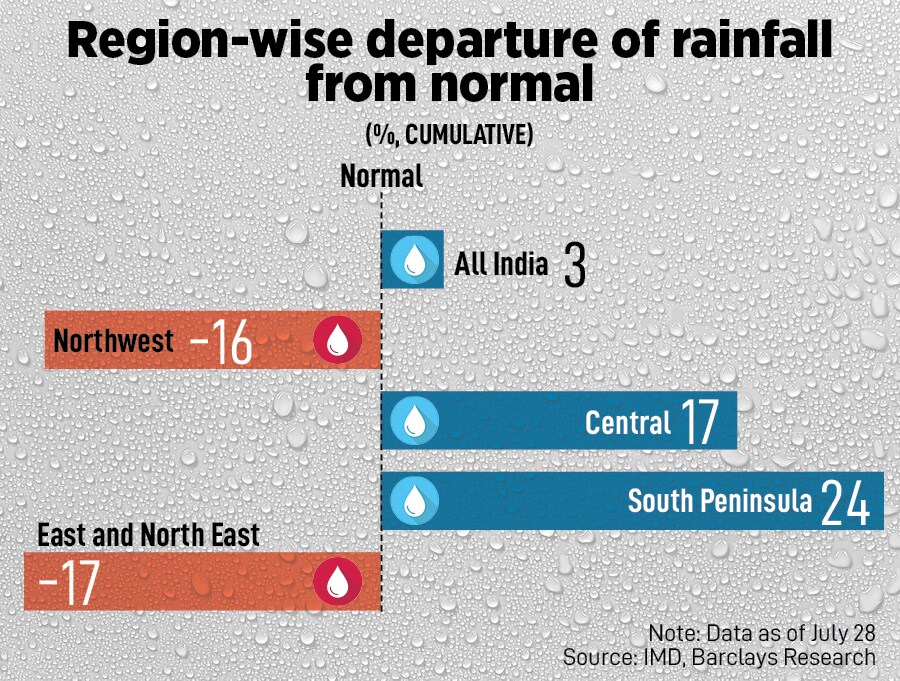
On a cumulative basis, rainfall was 2.7 percent above the long period average (LPA) as of 28 July, shows an analysis of Barclays based on Indian Meteorological Department (IMD) data. Continuous excess rains in the western and southern regions have pushed rainfall at the national average above its LPA. This compares with 1.2 percent below LPA in the previous week. 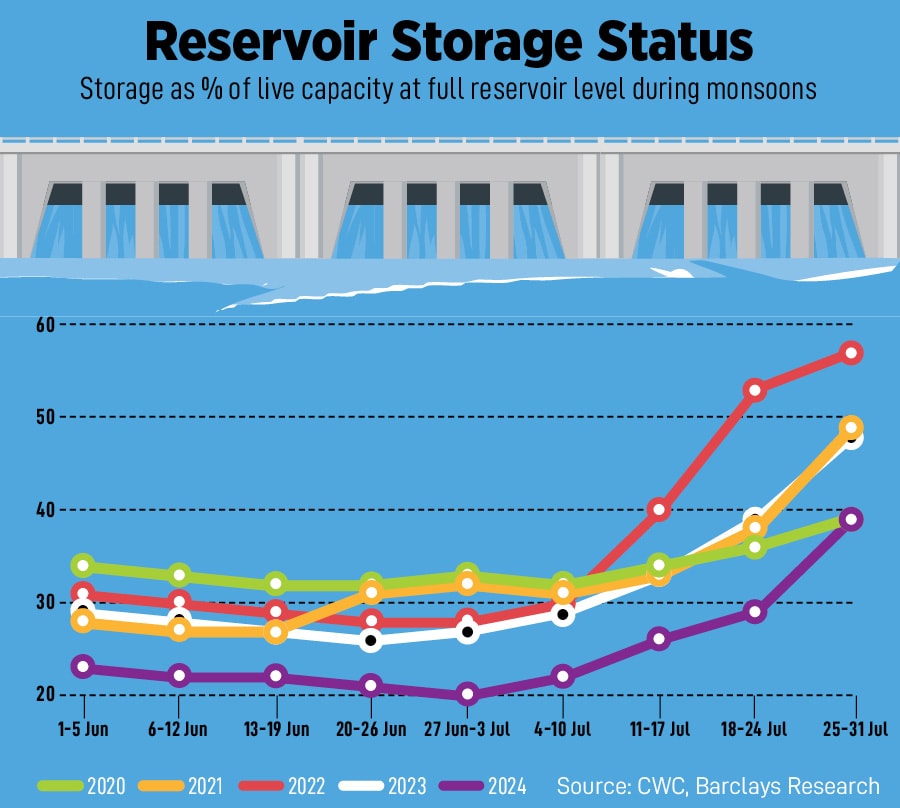
However, as uneven distribution of rains continues, the southern and central regions have cumulatively seen excess rainfall, while rains in the northwest and eastern states are deficient. “This gap also widened over the past week, with an increase in the number of subdivisions seeing excess rainfall,” says Shreya Sodhani, regional economist, Barclays.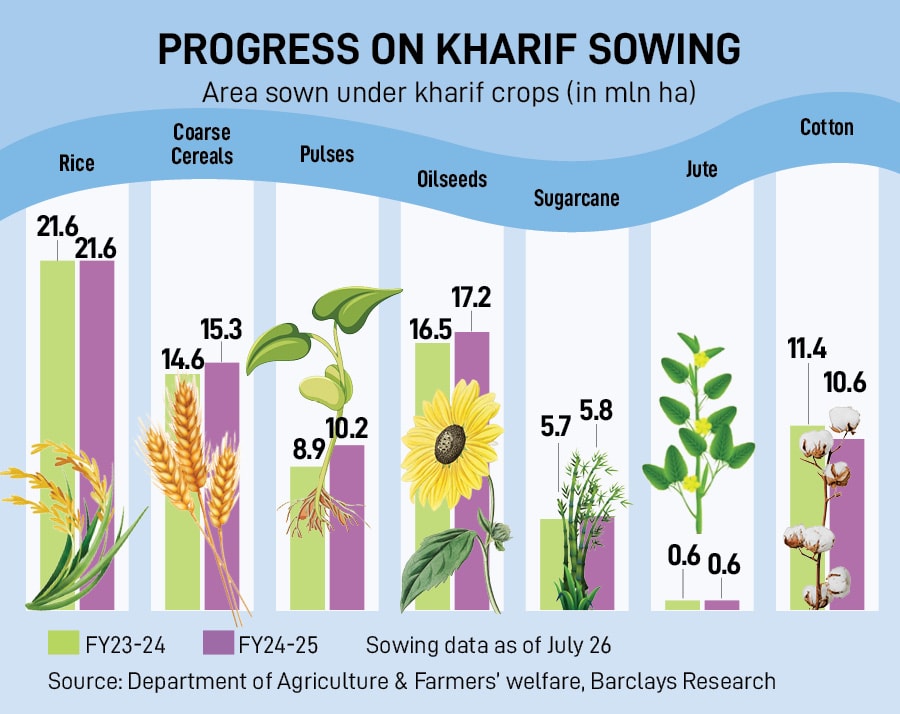
According to IMD, active monsoon conditions are expected in most parts of northwest India while increase in rainfall activity with isolated heavy falls is likely over East India towards the end of July.
Also read: Rain Watch for July 18-24: Disparity between regions widens, deficit in east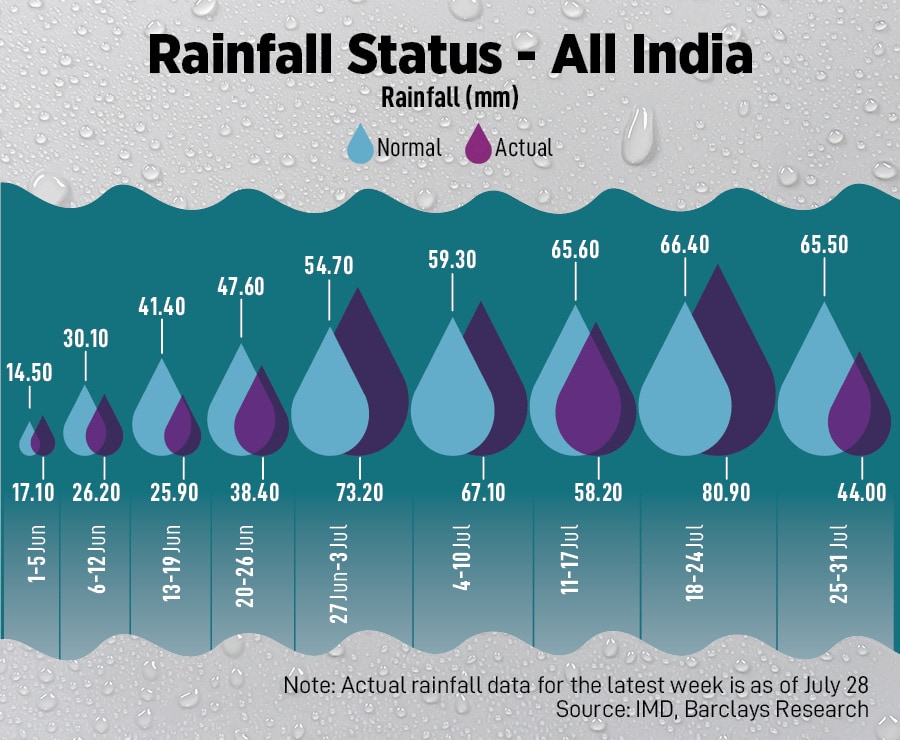
As of July 26, the area sown is 81.2 million hectares (ha mln), higher than the 79.4 ha mln in previous year. According to Barclays analysis, data till July 19 indicates that sowing is complete for 64 percent of the normal area. 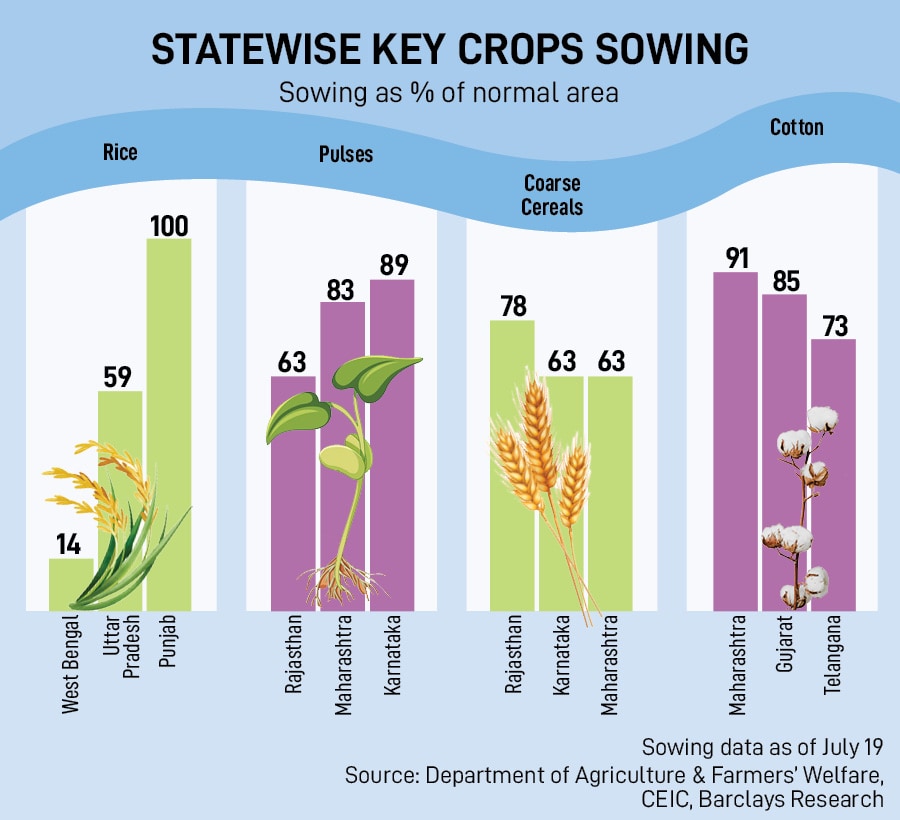
However, sowing of rice is lagging slightly compared with the previous year, while that in coarse cereals, pulses and oilseeds is 3-14 percent higher year-on-year. “The slower sowing in rice nationally is mostly due to a smaller area sown in West Bengal, driven by deficient rainfall so far, while that in Uttar Pradesh and Punjab is progressing comparatively better,” says Sodhani. Punjab is also experiencing below average rainfall, but Sodhani feels differences in irrigation coverage is driving the difference in sowing progress. 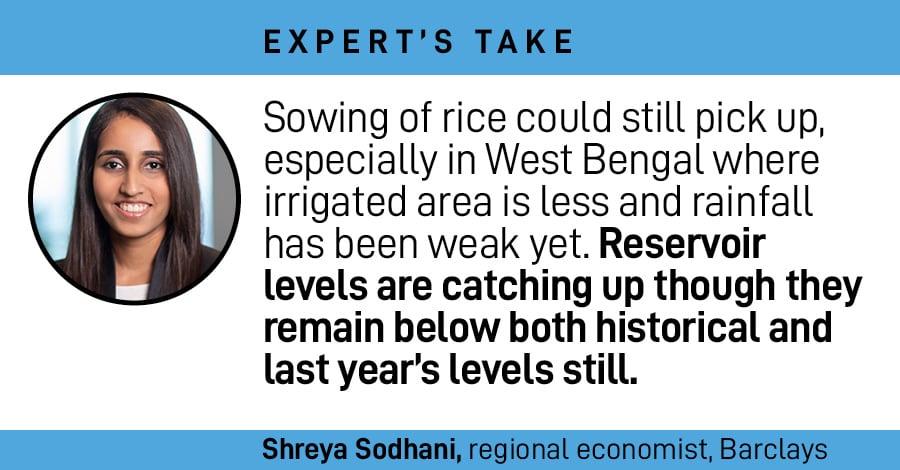
Meanwhile, as of July 25, storage in 150 reservoirs was at 39 percent of total capacity, which is higher than 29 percent in previous week. Though in terms of historical trends, storage levels remain low, it translates to 82 percent of the live storage of the corresponding period of last year and 96 percent of normal storage.














